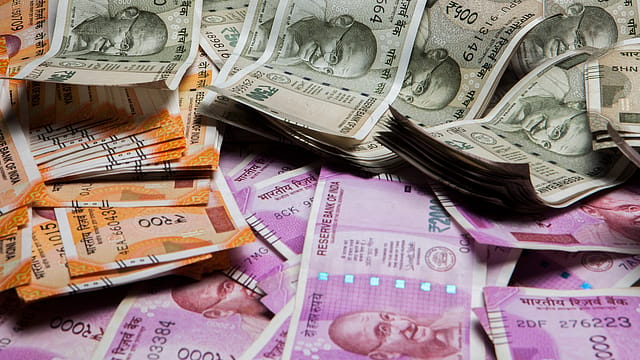Rupee falls to record low of 77.41 against US dollar
ADVERTISEMENT

The Indian rupee hit a record low of 77.41 against the US dollar in early trade on Monday as the greenback strengthened globally after the Federal Reserve hiked benchmark interest rate by half a percentage point.
The rupee opened at 77.17 against the US dollar at the interbank foreign exchange. The local currency then slipped to 77.41, shedding 52 paise from its last close.
This comes at a time when foreign portfolio investors have sold equities worth ₹6,417 crore in the Indian market in the first four trading sessions of May.
Brent crude – the international benchmark – has been hovering over $110 a barrel amid talks of a Russian oil embargo, which is likely to curb global supplies.
For India, the Russian invasion of Ukraine has unleashed a gloomy quadrilateral – rising crude oil prices, high gold prices, FII outflows and a weak rupee.
The steep rise in crude oil prices will have a direct impact on India's foreign exchange outflow, fiscal deficit and inflation. India imports around 86% of its annual crude oil requirement.
January 2026
Netflix, which has been in India for a decade, has successfully struck a balance between high-class premium content and pricing that attracts a range of customers. Find out how the U.S. streaming giant evolved in India, plus an exclusive interview with CEO Ted Sarandos. Also read about the Best Investments for 2026, and how rising growth and easing inflation will come in handy for finance minister Nirmala Sitharaman as she prepares Budget 2026.
As per a Reserve Bank of India (RBI) research paper dated January 04, 2019, a $10 per barrel increase in oil price could raise inflation by roughly 49 basis points and increase the fiscal deficit by 43 basis points (as a percentage of GDP).
Last week, the central bank hiked key policy rates by 40 basis points through unanimous decision at an off-cycle meeting of the Monetary Policy Committee (MPC).
After the rate hike, which came after maintaining the status quo for 11 MPC meetings, the repo rate now stands at 4.40%.
Elaborating on the MPC's rationale to hike policy rates, RBI governor Shaktikanta Das mentioned that globally, inflation is rising alarmingly and spreading fast. "Geopolitical tensions are ratcheting up inflation to their highest levels in the last three to four decades in major economies while moderating external demand. Global crude prices are ruling above ₹100 per barrel and they remain volatile. Global food prices touched a new record in March and have firmed up even further since then," he pointed out.
"Inflation-sensitive items relevant to India such as edible oils are facing shortages due to conflict in Europe and export ban by key producers. The jump in fertiliser prices and other input costs has a direct impact on food prices in India. Further, the normalisation of monetary policy in major advanced economies is now expected to gain pace significantly — both in terms of rate increases and unwinding of quantitative easing as well as rollout of quantitative tightening," he added.
